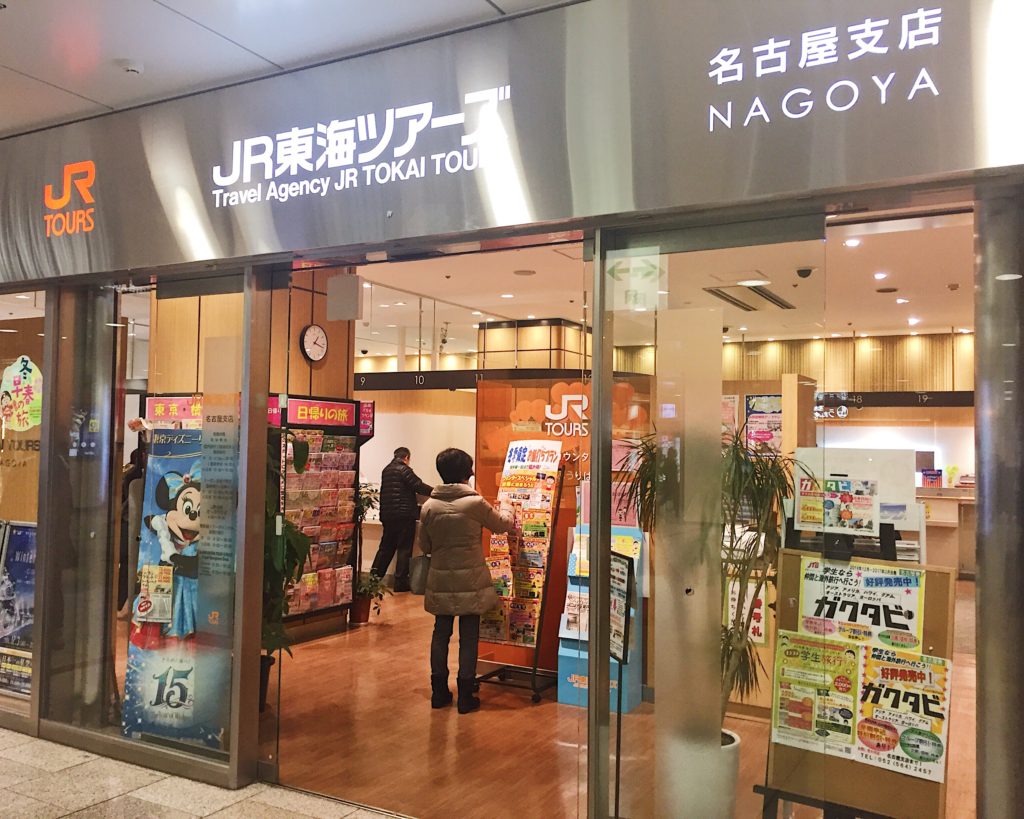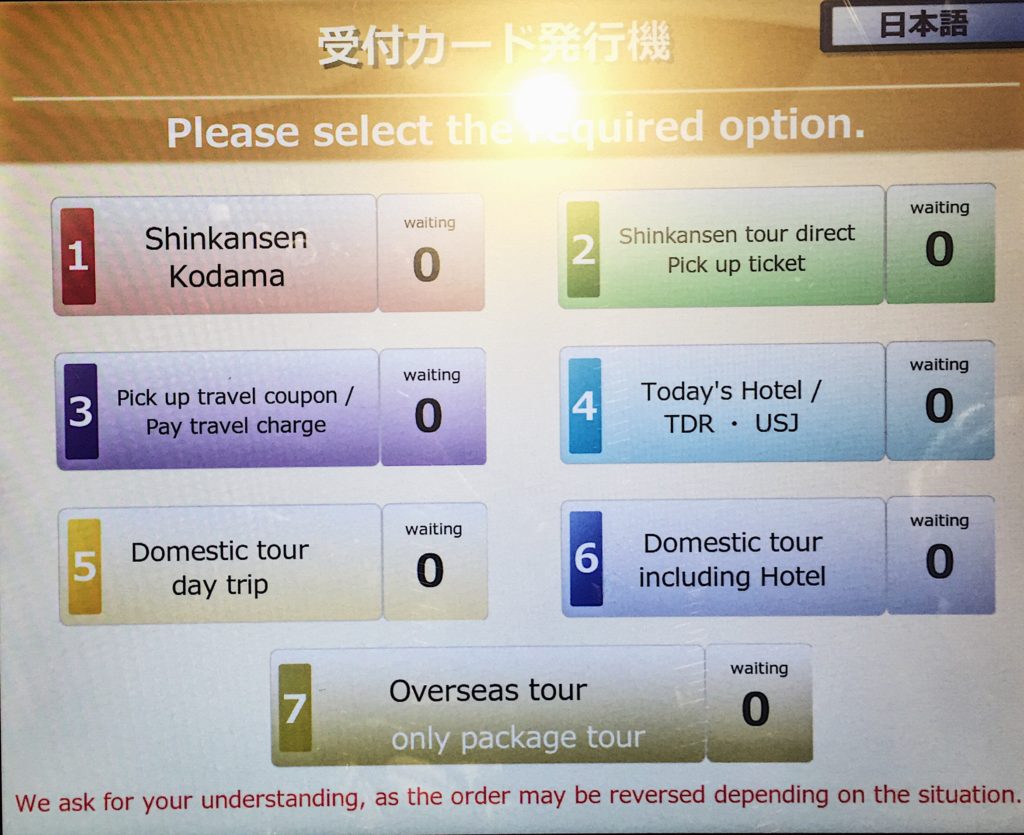It’s no secret that traveling by Shinkansen — aka the bullet train — can be an expensive way to travel in Japan. But it doesn’t have to be so expensive! You can get discounts on Shinkansen tickets by using Platt Kodama.

As I shared in my 2016 Travel Highlights, I did a lot of Shinkansen travel last year. I personally took 17 one-way Shinkansen trips, but the total number of Shinkansen tickets we purchased in 2016 was 43! This number reflects the number of tickets we bought for our family of 3, but also includes any tickets we purchased for our visitors.
At around $100 each, that’s a lot of money spent on train tickets!
We rarely pay full price for our Shinkansen tickets, however. No, I don’t have an in with someone in the JR office. I wish! We were able to save hundreds of dollars on Shinkansen tickets last year simply by using the Platt Kodama (aka Puratto Kodama) program offered by JR Tours.
What is the Platt Kodama?
First of all, let me say that this post is not sponsored. JR has no idea who I am, unless my name is on a list because of how much money I gave them last year. Ha. I am simply sharing this information so that you can save money, too.
The Platt Kodama program offers savings on Tokaido Shinkansen tickets between Tokyo and Osaka. This allows travelers to save big on travel between Osaka, Kyoto, Nagoya, and Tokyo — cities that happen to be the most popular destinations for Japan travelers.
Platt Kodama Benefits
The Platt Kodama program is an easy solution to saving big on one-way Shinkansen tickets.
Discounted Shinkansen Tickets
As I said before, traveling by Shinkansen can be expensive! The Platt Kodama program is a great option for saving money on train travel in Japan.
For a trip from Osaka to Tokyo, the savings is ¥3,840 (about $33 at the time of this writing) over the cost of a regular ticket. For the green car, the savings is ¥7,120 (over $60). This is depending on the route and the exchange rate, of course. Those savings add up quickly!
For example: We bought 4 tickets for a trip from Nagoya to Tokyo last spring. With the Platt Kodama discount, we were able to save ¥11,120 (almost $100) over the regular cost of ¥43,520 (nearly $400). All because I bought the tickets ahead of time and purchased them from the JR Tours office instead of the usual ticket counter.
Free Drink Included
When you buy your Platt Kodama ticket, you will get a voucher for a free drink. This voucher can be redeemed for a soft drink or a 350 ml can of beer/Chu-hi at one of the convenience stores in the train station. This voucher CAN NOT be redeemed on board the train.
Platt Kodama Drawbacks
The Platt Kodama isn’t necessarily the best option for every trip. You need to weigh the options to make sure that it is the best choice for you.
You Must Plan Ahead
One of the benefits of train travel in Japan is being able to turn up at the train station 30 minutes before leaving, buying your ticket for the next train, and hopping on the train — after grabbing your bento box + chu-hi, of course.
With the Platt Kodama, you can not buy your tickets on the same day of travel. You must buy your tickets in advance. You can buy your tickets the day before you plan to travel, however, I recommend getting your tickets at least a few days before. Especially if you are traveling with multiple people or need to get on a specific train.
The Kodama Train is Slow
The Kodama train is the slowest option for Shinkansen travel between Tokyo and Osaka. For example, I can get from Nagoya Station to Tokyo Station in about 90 minutes on the Nozomi train. However, on the Kodama train, this same journey will take me over 3 hours. This is because the Kodama train stops at every stop between Nagoya and Tokyo. This generally isn’t a problem, but I usually choose to buy the more expensive ticket if I need to be somewhere early or if I want more time at my destination.
For example, if we are planning to weekend in Tokyo and can’t leave until my husband gets home from work at 5:00 PM, we will probably choose the faster train out of Nagoya in order to get to Tokyo in time for dinner. In this case the time savings is more important to us than the lower cost.
You Can Not Change Your Kodama Ticket
Another thing to note is that, unlike a regular Shinkansen ticket, you can not make changes to your Platt Kodama reservation. If you miss your train or can not travel, you can not get a refund. Like most rules in Japan, there are NO EXCEPTIONS.
For this reason, I very rarely choose the Platt Kodama when returning to Nagoya after flying into Tokyo (Narita or Haneda) or Osaka (Kansai). The ticket savings is not worth the potential of losing the entire purchase price due to a delayed flight. In these cases I opt to buy a ticket at the airport after I land instead. I’d much rather pay a little more than miss the Kodama and still need to buy a Shinkansen ticket.
I also make sure to plan for more than enough time to catch the train, especially if I am not traveling by myself.
Even with these potential hassles, we tend to choose the Platt Kodama about half of the time.
How to Buy Platt Kodama Tickets
Platt Kodama tickets need to be purchased from a JR Tours office. Since we live in Nagoya, we generally buy our tickets from the JR Tours office located in Nagoya Station. The purchase procedure may differ between each JR Tour office, but this the procedure for the JR Tour office at Nagoya Station.

You do not need an appointment to buy your Platt Kodama tickets. Simply walk in to the office and take a number from the machine located right inside the door.

Selecting English will tell the JR Tours employees that you would like to work with an employee who speaks English. If you feel comfortable with Japanese, you can skip this step. I recommend asking for English the first time you visit the JR Tours office, or if you are trying to plan a multi-person or multi-destination trip.
As you can see in the photo above, you can also book other tour packages through the JR Tours office. We haven’t ever used this service to book travel in Japan, but I would love to hear from anyone who has!
Fill Out the Platt Kodama Form
To make buying your Platt Kodama tickets easier, fill out the Platt Kodama form. I’m sure you can buy tickets without filling this form out at all, but I haven’t ever done so.
You do not need to fill this form out ahead of time. They will have a stack of these forms in the JR Tours office, along with clipboards and pens for you to use. Filling the form out at home is especially helpful if you are buying tickets for multiple people (or multiple trips) at the same time.
You can find the Kodama timetables on the Platt Kodama website. I write my first choice (train number/route/time) on the form, but it’s also a good idea to have at least a couple of backup trains that you would be willing to take as well in case the train you want is full.
Buying Your Platt Kodama Tickets
Once you have taken your number from the machine, have a seat in the waiting area and wait for your number to be called. They will announce the next number over the loud speaker, and your number will flash on the screens located around the waiting room. The attendant who will assist you will also raise their hand. You will not have any trouble knowing when it’s your turn to buy your ticket(s)!
When your number is called, you will go to the counter and hand your form to the employee. They will then look over your information and confirm the date and train times with you. They will check to see if there are tickets available for your requested train. After the employee has confirmed your tickets, they may either ask you to wait while they print your tickets or they may print them when while you wait at the counter.
You can pay with cash or credit card. I always use my Chase Sapphire Preferred* card so that I get double points on travel purchases.
It’s that easy!
Traveling with your Platt Kodama Ticket
Traveling with your Kodama ticket is easy! On the day of travel, you will turn up at the station, go get your free drink using your drink voucher, and then go to the Shinkansen wicket. Instead of putting your ticket through the machine, simply hand your Kodama ticket to the attendant. He or she will stamp your ticket and then you’ll be on your way.
When you get to your destination, simply hand your Kodama ticket to the attendant when you exit.
Other Ways to Save on Shinkansen Tickets
The Platt Kodama program isn’t the only way to save money on Shinkansen tickets in Japan. Here are a few other ideas:
Book an Unreserved Seat
If you are traveling alone — or don’t mind not sitting with your travel partner — you can save some cash on your Shinkansen tickets by purchasing an unreserved ticket. You can save about 700 yen per ticket by booking an unreserved Shinkansen ticket, depending on your route. It’s not a huge savings per ticket, but for three people round trip it can add up quickly. We have done this a few times and have always been able to find seats together.
However, there is always a chance that you won’t find seats together — or you might not get a seat at all. This isn’t a huge deal if you’re going from Nagoya to Kyoto (about 35 minutes on the Nozomi), but standing for even part of the trip from Osaka to Tokyo could be a pain. Buy an unreserved Shinkansen ticket at your own risk.
Buy the Japan Rail Pass
The Japan Rail Pass is a popular option for foreign visitors to Japan. Passes are sold for different lengths of time and, depending on travel plans, may or may not be worth the cost.
Expats in Japan can not take advantage of the JR Rail pass, unfortunately. However, if you have visitors coming, it could be a great option for them. You can find more information about the Japan Rail pass here.
Please note that the pass must be purchased outside of Japan and the voucher needs to be exchanged at a Japan Rail Pass exchange office upon arrival. However, they are experimenting with a pass that can be purchased after arriving in Japan! This program will begin on March 8, 2017 and will run for one year. You can find more information here.
I’d love to hear from you! Have you ever used the Platt Kodama program? Do you have any other suggestions for saving money on Shinkansen tickets?
* referral link




